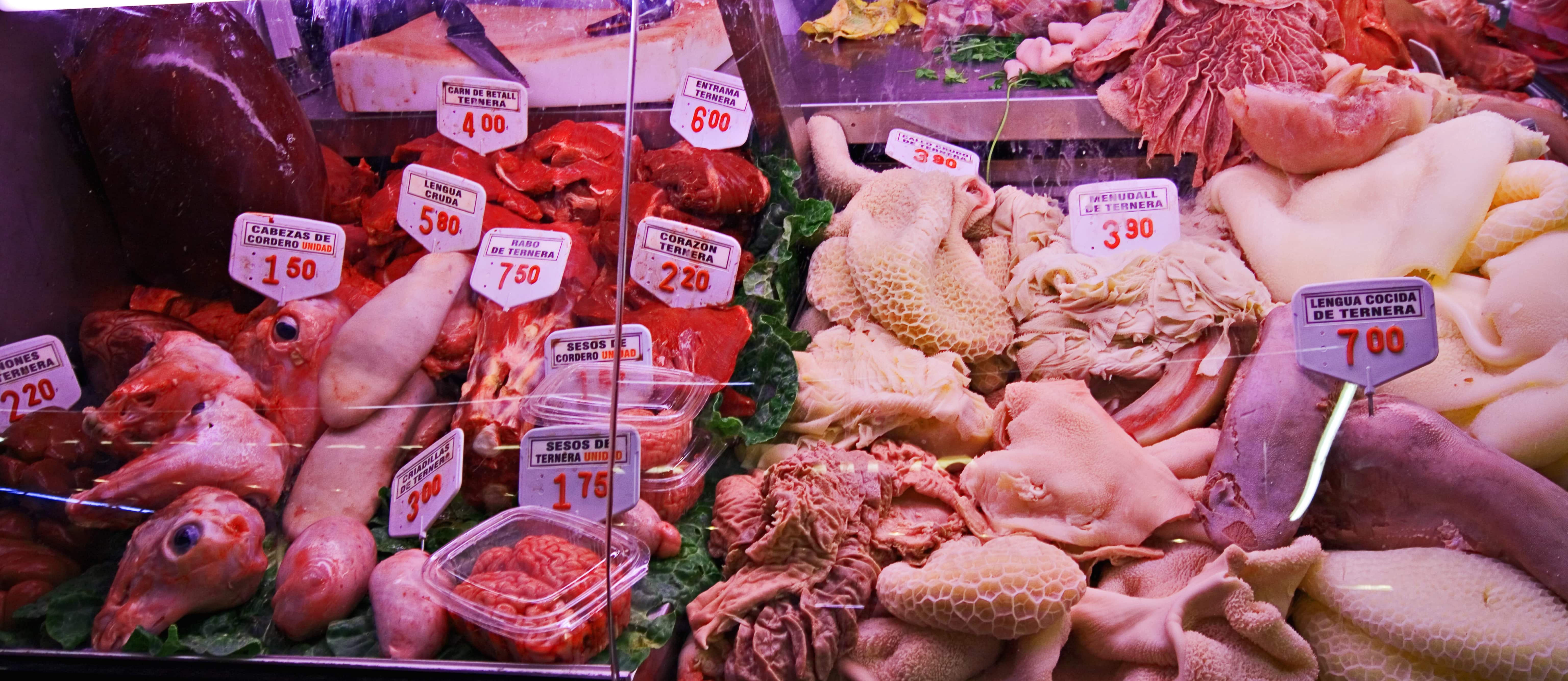Although slaughterhouse workers with the most poultry exposure appear to suffer the greatest excess mortality (see Poultry Exposure Tied to Liver and Pancreatic Cancer), increased risk of death from cancer is also found in other slaughterplant workers. This research goes back decades and shows higher cancer rates in butchers, slaughterhouse workers, meat cutters, and those working in meat processing plants.
The increased risk for meat industry workers in developing and dying from cancer “may be due to animal-to-human viruses or antigenic stimulation through chronic exposure to animal protein.” Cancer-causing virus exposure could also help explain why those who eat meat have higher cancer rates. There’s even a retrovirus associated with cancerous fish tumors, which has been speculated as the cause for increased cancer rates in American seafood workers.
Growing up on a livestock farm is associated with higher rates of blood-borne cancer, lymphomas and leukemia. Worst, though, is growing up on a poultry farm, which is consistent with chicken consumption being most closely tied to these cancers. Eating a quarter of a chicken breast daily is associated with a doubling or tripling of risk for these cancers (see EPIC Findings on Lymphoma). Growing up on a farm raising only plant crops, however, is not associated with blood-borne cancers.
What about growing up with dogs and cats? See Pets & Human Lymphoma and Are Cats or Dogs More Protective for Children’s Health? You still probably shouldn’t eat them, though (see Foodborne Rabies).
Researchers are finally able to start connecting the dots. High levels of antibodies to avian leucosis/sarcoma viruses and reticuloendotheliosis viruses in poultry workers provide evidence of infectious exposure to these cancer-causing poultry viruses. The highest levels were found not in the eviscerators, or gut-pullers, or those that hang the live birds, but among the line workers that just cut up the final product.
In an attempt to narrow down which diseases were associated with which meat, researchers tried separating out those in pig slaughtering and pork processing. “One of the primary sources of concern in using pig organs and tissues as transplants in humans is the fear of introducing zoonotic infections” from animals. We’re concerned about what’s called PERV transmission, the pig-to-human transmission of porcine endogenous retroviruses, raising theoretical concerns about cancer, immunological, and neurological disorders. However, we don’t need to get a pig transplant to be exposed. PERVs are also found in blood, so people exposed to pig blood may be exposed to the virus.
The main finding unique to the pork study (profiled in my video Eating Outside Our Kingdom), which was not found in beef and sheep processing, was the significant excess of deaths “from senile conditions such as Alzheimer’s disease.” It reminds me of all those poor pork brain extraction workers. You think your job is bad? How would you like to work at the “head-table”? Well, that doesn’t sound so bad until you learn it’s where, through the “unbridled use of compressed air in the pursuit of maximum yield of soft tissue,” they remove the brains of severed swine heads.
In one study, researchers noted that as the line speeds increased, “the workers reported being unable to place the skulls completely on the brain removal device before triggering the compressed air, causing greater splatter of brain material.” The aerosolized “mist of brain” is suspected to be the cause of dozens of cases of inflammatory neurological disease in workers who started with symptoms as mild as pain, tingling, and difficulty walking, and ended up so bad that doctors had to put them in a coma for six weeks because of unrelenting seizures.
At first researchers thought it was a brain parasite, but now it’s known to be an auto-immune attack triggered by the exposure to aerosolized brain. A similar mechanism has been blamed for meat proteins triggering inflammatory arthritis in people eating meat. By eating fellow animals, we are exposed not only to fellow animal diseases, but to animal tissues that our body may mistake as our own. This may be one advantage to eating a more plant-based diet. By eating outside of the animal kingdom—dipping into the plant or mushroom kingdoms for supper—not only do we not have to worry about getting something like Dutch elm disease, but we can be reassured by the fact that never has an “auto-immune polyradiculoneuropathy” been blamed on a head… of lettuce.
For more on foodborne illnesses one can contract from fellow animals, see, for example:
- Yersinia in Pork
- Poultry and Paralysis
- MRSA in U.S. Retail Meat
- Amnesic Seafood Poisoning
- Avoiding Chicken to Avoid Bladder Infections
- Food Poisoning Bacteria Cross-Contamination
- Salmonella in Chicken & Turkey: Deadly but Not Illegal
Probably the strangest example of this whole concept is the Neu5Gc story. A 7-part video series worth checking out:
- Cancer as an Autoimmune Disease
- Clonal Selection Theory of Immunity
- Clonal Deletion Theory of Immunity
- The Inflammatory Meat Molecule Neu5Gc
- How Tumors Use Meat to Grow: Xeno-Autoantibodies
- Nonhuman Molecules Lining Our Arteries
- Meat May Exceed Daily Allowance of Irony
-Michael Greger, M.D.
PS: If you haven’t yet, you can subscribe to my videos for free by clicking here and watch my full 2012 – 2015 presentations Uprooting the Leading Causes of Death, More than an Apple a Day, From Table to Able, and Food as Medicine.
